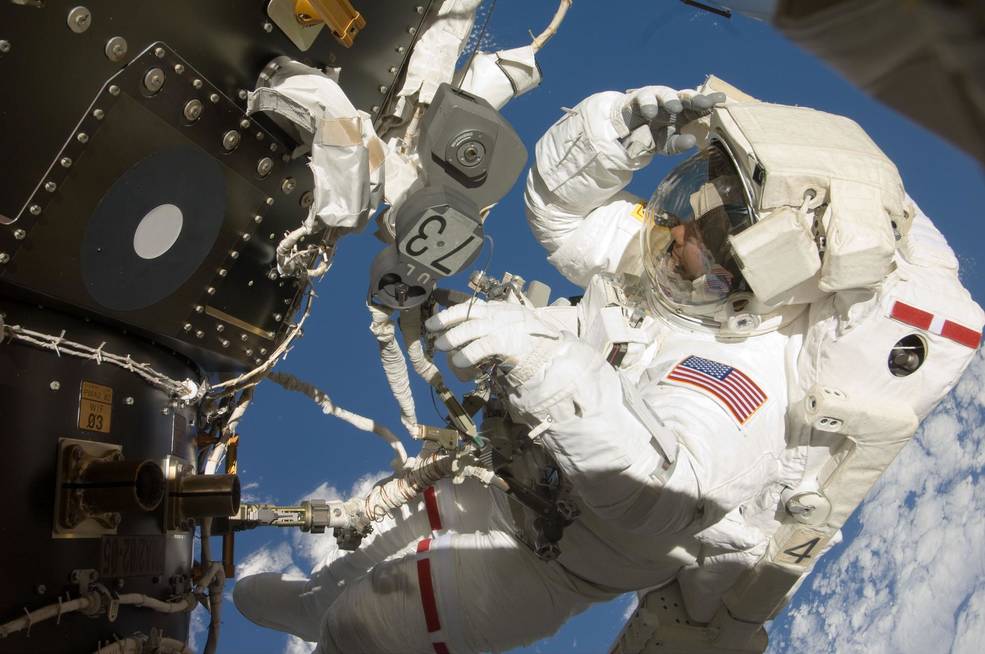Russian anti-satellite test has made spacewalks riskier for astronauts

Space is more dangerous than ever after Russia's recent anti-satellite (ASAT) test.
On Tuesday (Nov. 30), two NASA astronauts were scheduled to conduct a spacewalk and replace a faulty, 21-year-old antenna system. However, a space debris warning was issued for the International Space Station (ISS), causing the agency to postpone the event, citing the "lack of opportunity to properly assess the risk it could pose to the astronauts," the agency said in a statement.
While NASA did not specify the origins or nature of the debris that caused this delay, this concern over space debris comes just one day after NASA officials revealed that the debris cloud created by Russia's recent ASAT test increased the risk to astronauts during a spacewalk.
Related: The worst space debris events of all time
During a news briefing on Monday (Nov. 29), Dana Weigel, NASA's deputy manager of the International Space Station program, shared that there is typically a one-in-2,700 chance that a piece of space debris might puncture a spacesuit during a spacewalk but Russia's ASAT test increased this risk by 7%.
Typically, astronauts and the space station itself both face a small risk from floating pieces of debris. "The EMU [extravehicular mobility unit, or spacesuit] is so much more vulnerable to smaller pieces, and there are so many more smaller pieces of debris mostly contributed by micrometeoroids and naturally-occurring events," Weigel said. However, after the ASAT test, that risk increased by a small amount, "on the order of about 7%," she added.
However, this small increase in space debris risk isn't out of the ordinary with expected, natural fluctuations in natural debris like micrometeoroids, Weigel said.
Get the Space.com Newsletter
Breaking space news, the latest updates on rocket launches, skywatching events and more!
"Unfortunately when you have a debris event like this and you get a lot of really small pieces scattered around, it just becomes part of the average environment," Weigel said, adding that "though the 7% is a small increase, that is well within the flux that we see in the natural environment, so it's not elevated over what we've seen."
Since the ASAT test happened so recently, it will take "a few months to get all of those [pieces] cataloged and into our normal debris tracking process where we can then assess distances or how close these items get to the ISS," she added.
Weigel also added that because of the minimal expected nature of the risk, the astronauts weren't anticipating performing their spacewalk any differently or taking specific actions to avoid debris. "At some point, there is not a specific directional aspect to the debris. So there's nothing different that they will do out on the spacewalk," Weigel said.
However, it was decided early on, not too long after the ASAT test, that to be "conservative," the astronauts would take a few "get ahead" tasks, or optional extra items off of the spacewalk schedule.
"There's a few other things that we ended up taking off," Weigel told Space.com during the briefing. "We had to make a decision pretty early on in terms of what we were going to ask the crew to study and prepare to do — so before we really had an understanding of the free environment. We wanted to be conservative."
Email Chelsea Gohd at cgohd@space.com or follow her on Twitter @chelsea_gohd. Follow us on Twitter @Spacedotcom and on Facebook.
Join our Space Forums to keep talking space on the latest missions, night sky and more! And if you have a news tip, correction or comment, let us know at: community@space.com.

Chelsea “Foxanne” Gohd joined Space.com in 2018 and is now a Senior Writer, writing about everything from climate change to planetary science and human spaceflight in both articles and on-camera in videos. With a degree in Public Health and biological sciences, Chelsea has written and worked for institutions including the American Museum of Natural History, Scientific American, Discover Magazine Blog, Astronomy Magazine and Live Science. When not writing, editing or filming something space-y, Chelsea "Foxanne" Gohd is writing music and performing as Foxanne, even launching a song to space in 2021 with Inspiration4. You can follow her on Twitter @chelsea_gohd and @foxannemusic.









